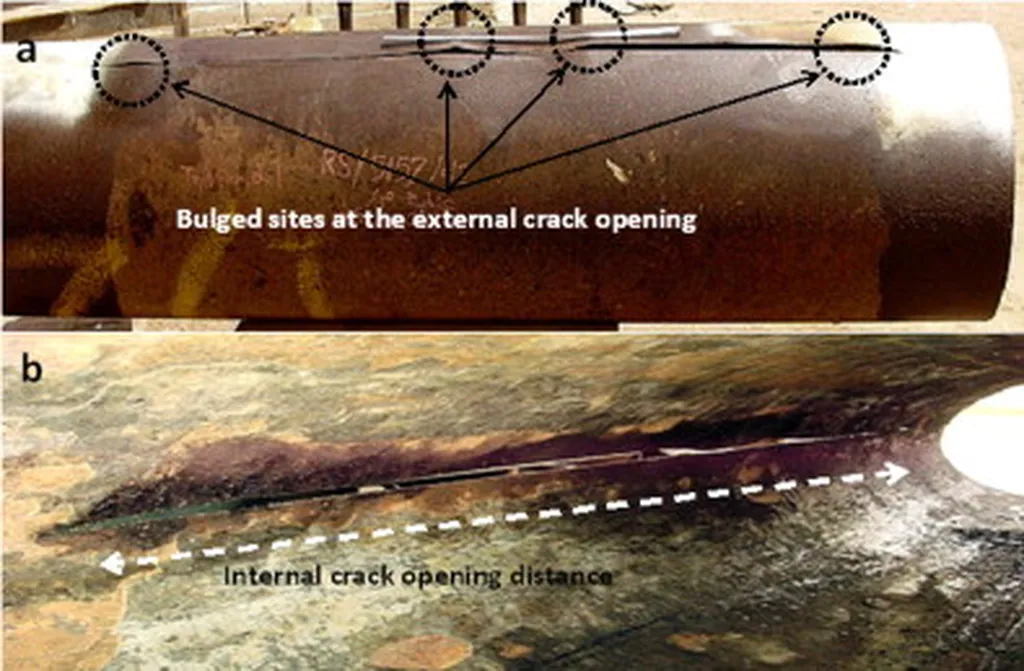In the vast network of underground pipelines that crisscross the globe, groove corrosion is a persistent and costly challenge. This type of corrosion, characterized by narrow, deep grooves in the pipeline, can lead to catastrophic failures if left unchecked. However, a new methodology developed by Timur S. Sultanmagomedov and his team offers a promising solution to this pressing issue. Their research, published in *Известия Томского политехнического университета: Инжиниринг георесурсов* (Tomsk Polytechnic University Journal: Engineering of Georesources), focuses on the preventive turnaround of pipelines subject to groove corrosion, a technique that could significantly extend the lifespan of these critical energy infrastructure components.
The methodology involves rotating the pipeline to remove the groove from the zone of intensive corrosion. To do this safely and effectively, it’s crucial to understand several factors, including the geometric characteristics of the groove, soil properties, pipeline depth, corrosion rate, and operating pressure. “The key is to estimate the gripping force, the torque applied to the pipeline, and the distance between the gripping devices,” Sultanmagomedov explains. “This allows us to rotate the pipeline to the required angle without causing plastic deformation or compromising its strength and stability.”
The research team developed a finite element model of the pipeline to simulate this preventive turnaround. They then compared the simulation results with field experiments to validate their methodology. In one such experiment, a 219×5.0 pipeline with a length of 146.4 meters was successfully rotated at an angle of 28.77° using two gripping mechanisms. The simulation results closely matched the field experiment, with rotation angles differing by only a few degrees in characteristic sections.
The implications of this research for the energy sector are substantial. Pipeline failures due to groove corrosion can lead to costly repairs, environmental damage, and even loss of life. By providing a method to prevent these failures, Sultanmagomedov’s work could save energy companies millions of dollars in maintenance and repair costs. Moreover, it could enhance the safety and reliability of energy infrastructure, benefiting both companies and consumers.
Looking ahead, this research could shape the future of pipeline maintenance and corrosion management. As Sultanmagomedov notes, “This methodology can be further refined and adapted to different types of pipelines and corrosion scenarios.” Future developments could include automated systems for preventive turnaround, real-time monitoring of pipeline corrosion, and integration with other pipeline maintenance techniques.
In the ongoing battle against pipeline corrosion, this research offers a powerful new weapon. By enabling preventive turnaround, it could help energy companies stay ahead of the curve, preventing failures before they occur and ensuring the safe, reliable flow of energy to consumers. As the energy sector continues to evolve, such innovations will be crucial in maintaining the infrastructure that powers our world.

